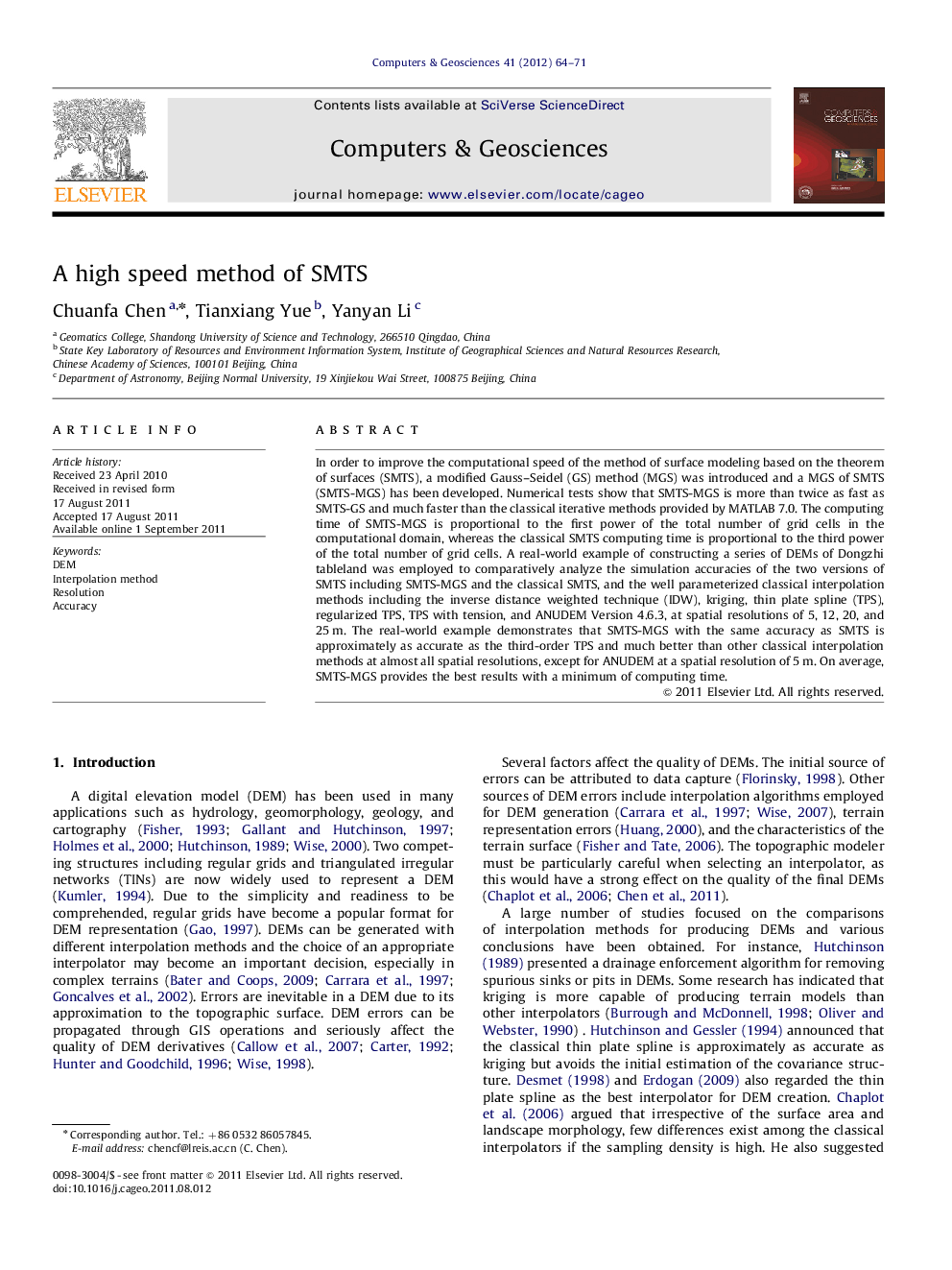| Article ID | Journal | Published Year | Pages | File Type |
|---|---|---|---|---|
| 508040 | Computers & Geosciences | 2012 | 8 Pages |
In order to improve the computational speed of the method of surface modeling based on the theorem of surfaces (SMTS), a modified Gauss–Seidel (GS) method (MGS) was introduced and a MGS of SMTS (SMTS-MGS) has been developed. Numerical tests show that SMTS-MGS is more than twice as fast as SMTS-GS and much faster than the classical iterative methods provided by MATLAB 7.0. The computing time of SMTS-MGS is proportional to the first power of the total number of grid cells in the computational domain, whereas the classical SMTS computing time is proportional to the third power of the total number of grid cells. A real-world example of constructing a series of DEMs of Dongzhi tableland was employed to comparatively analyze the simulation accuracies of the two versions of SMTS including SMTS-MGS and the classical SMTS, and the well parameterized classical interpolation methods including the inverse distance weighted technique (IDW), kriging, thin plate spline (TPS), regularized TPS, TPS with tension, and ANUDEM Version 4.6.3, at spatial resolutions of 5, 12, 20, and 25 m. The real-world example demonstrates that SMTS-MGS with the same accuracy as SMTS is approximately as accurate as the third-order TPS and much better than other classical interpolation methods at almost all spatial resolutions, except for ANUDEM at a spatial resolution of 5 m. On average, SMTS-MGS provides the best results with a minimum of computing time.
► We employ a modified Gauss–Seidel (MGS) method to solve SMTS termed SMTS-MGS. ► SMTS-MGS is faster than the classical iterative methods. SMTS-MGS is approximately as accurate as the third order TPS. ► SMTS-MGS is more accurate than the classical interpolators. ► On average, SMTS-MGS is the most accurate method with a minimum of computing time.
